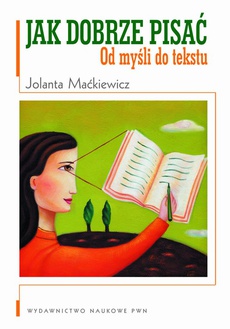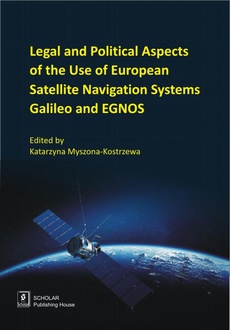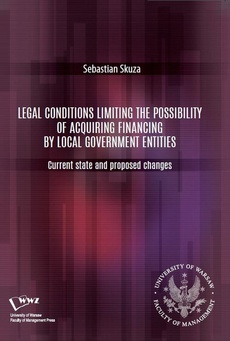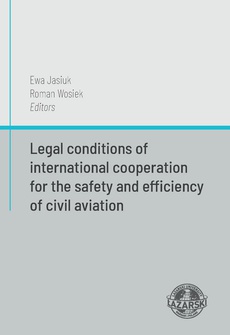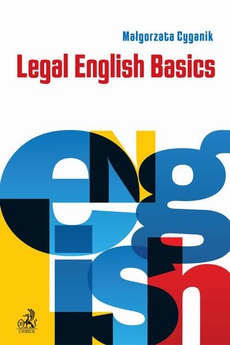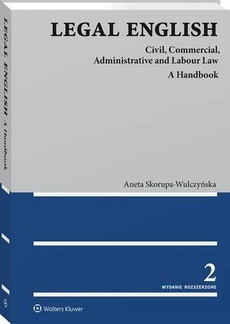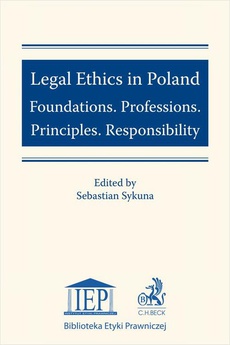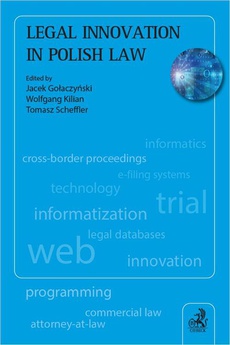POLECAMY
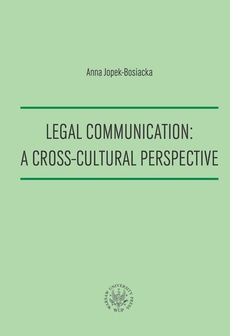
-17%
Legal Communication : A Cross-Cultural Perspective
Autor:
Wydawca:
Format:
pdf, ibuk
Praca stanowi pierwszą w polskiej literaturze próbę integralnego powiązania ze sobą zagadnień lingwistyki o zabarwieniu kulturowym z zagadnieniami prawoznawstwa. Można ją traktować jako jeden z podstawowych tekstów w zakresie kształcenia adeptów przekładu prawnego.
Książka jest przeznaczona dla tłumaczy oraz innych specjalistów w dziedzinie prawnej, przede wszystkim prawodawców, sędziów i pracowników naukowych, specjalizujących się w teorii i filozofii prawa. Prawnikom i językoznawcom pomaga w bliższym zrozumieniu tekstów prawnych w nowych kontekstach komunikacji prawnej.
Legal Communication: A Cross-Cultural Perspective proposes an integrated interdisciplinary framework for describing and explaining legal communication. The pragmalinguistic analysis of English and continental legal discourse combines two areas of expertise: linguistics and jurisprudence. Legal discourse is treated as an instance of cross-cultural communication and explained against tendencies of globalization and Europeanization.
This book is intended for legal translators and interpreters as well as other specialists in the legal domain, first of all legislators, judges and academics specializing in theory and philosophy of law. It brings both lawyers and linguists closer to the understanding of legal texts in new contexts of legal communication.
| Rok wydania | 2010 |
|---|---|
| Liczba stron | 271 |
| Kategoria | Językoznawstwo |
| Wydawca | Uniwersytet Warszawski |
| ISBN-13 | 978-83-235-1187-8 |
| Numer wydania | 1 |
| Język publikacji | angielski |
| Informacja o sprzedawcy | ePWN sp. z o.o. |
Ciekawe propozycje
Spis treści
| Introduction | 7 |
| PART I. SETTING THE LEGAL SCENE | 15 |
| Chapter 1. Language of law and legal communication | 17 |
| 1.1. The concept and the status of the language of law | 18 |
| 1.2. Evolution of the language of law | 28 |
| 1.3. The language of law as special purpose communication | 35 |
| 1.4. Approaches to studies of language of law and legal communication | 41 |
| Chapter 2. Speaking voices in legal context | 51 |
| 2.1. Participant roles and their linguistic expression from the point of view of (socio)linguistics and jurisprudence | 52 |
| 2.1.1. Addresser and sender | 55 |
| 2.1.2. Addressee and receiver | 58 |
| 2.2. The position of translator in legal communication | 65 |
| 2.3. The structure of the legal community | 70 |
| 2.3.1. Analysing communities | 71 |
| 2.3.2. Legal community as specialist discourse community | 77 |
| PART II. TOWARDS AN INTERTEXTUAL DESCRIPTION OF LEGAL DISCOURSE | 85 |
| Chapter 3. Semantics of legal discourse | 87 |
| 3.1. Precision | 93 |
| 3.2. Indeterminacy | 103 |
| 3.3. Specialization | 106 |
| 3.4. Complexity | 109 |
| 3.5. Conservatism | 121 |
| Chapter 4. Pragmatics of legal discourse | 131 |
| 4.1. Evolution of text typologies | 133 |
| 4.2. Legal discourse as authoritarian discourse | 137 |
| 4.3. Legal rhetoric and legal genres | 140 |
| 4.4. Legal reasoning | 150 |
| 4.5. Legal speech acts and performativity | 157 |
| 4.6. Legal modality | 166 |
| 4.7. Intertextuality of legal discourse | 174 |
| PART III. LEGAL DISCOURSE IN CROSS-CULTURAL CONTEXT | 179 |
| Chapter 5. Law, context, culture | 181 |
| 5.1. Analysing context | 181 |
| 5.2. Legal culture(s) as context | 188 |
| Chapter 6. Legal power | 195 |
| 6.1. Analysing power | 196 |
| 6.2. Power of expert knowledge | 201 |
| 6.3. Legal interpretation | 204 |
| Chapter 7. ‘Europeanisation’ of Polish legal discourse and legal culture | 211 |
| 7.1. The European legal culture as a hybrid culture | 211 |
| 7.2 Development of the European legal culture | 212 |
| 7.3. The ‘Europeanisation’ of Polish legislative discourse | 222 |
| Conclusions | 233 |
| Bibliography | 241 |
| Index | 267 |




